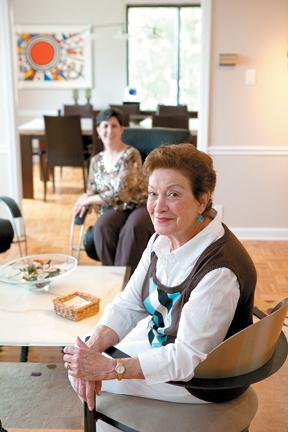Learning to accept “exceptional” children
Published June 13, 2012
In 1961, several days after I had my first child, an acquaintance also delivered a baby boy. Soon after, she received a visit from her doctor telling her that the baby was a “mongoloid.” The doctor’s best advice was to put the baby in an institution, go home and make another baby. When she refused, she was then visited by a social worker with the same advice. Again, my acquaintance refused, kept her baby, and did her best to raise him.
She was helped by a small program for “exceptional” children started by the archdiocese by then Father Behrman. He was one of the promoters of services and recognition for the developmentally disabled. The work he and Father Hampe started was truly epic.
My third child was diagnosed with epilepsy at age 5. A developmental disability, epilepsy is a chronic neurological disorder, When I enrolled her for school, officials said she would have to be referred to Special School District — she would not be able to be enrolled in “regular” public school. That began my first fight with authority.
There was an epilepsy federation, and when I called to ask if it had parent support, or any education programs, I was told no, but that it was a good idea and why didn’t I come and start it. I did join and begin a few programs.
Since I was the only one talking publicly about epilepsy in 1971, the programs came to the attention of the Department of Mental Health, and I was appointed to the State Planning Council. It was through my work in Jefferson City that I was made aware of the lack of programs for the developmentally disabled. I toured the institutions and met people. There were no early intervention programs, school integration, employment, independent living, or socialization programs. Parents who kept their children at home were pretty much on their own. In those days there were only two diagnoses — Retarded and/or Disabled and these were further described as slight, moderate, and severe.
It is difficult to remember how far we have come in the past 50 years. Parents kept their children at home and they were little seen in public. Children with physical disabilities had no access to the community, and in fact were rarely seen in the original sheltered workshops. Certainly, a job in the community was unthinkable.
I personally saw the tables in institutions that had grooves carved into the tops where the food was placed for patients to grab with their hands. I saw the people who had been placed there because they were an embarrassment to their families — i.e. born out of wedlock, had epilepsy, or didn’t behave properly. Attempts to integrate them back into society were mostly failures because they had been institutionalized since birth.
What excitement the first early intervention program brought. The passage of Federal Law 94/142 or the Equal Education Act brought about the creation of Phase 2, a cooperative effort between Special School District and the St. Louis Public Schools, which allowed children with special needs to be mainstreamed. Then parents began taking control and demanding the rights that had been denied to their children. As a result, training, socialization, employment opportunities and group homes came into being.
In the late 1970s, a movement called “deinstitutionalization” began to take people out of institutions and integrate them into society. Existing schools and programs had to quickly adapt to the needs of these people, and further demands were made for more workshops and living arrangements.
Then came the passage of Senate Bill 40 in St. Louis County in 1978. At this point, I must remind everyone that then-County Executive Gene McNary fought to keep this board free of politics, and personal and political interests. What he never said — and what I know — is that he took a lot of flak from his own staff and party for appointing people to this board for their abilities to create and improve services rather than party affiliation. Because of his impartiality, this board was allowed to do what was right rather than what was politically expedient.
He was followed by other executives, some of whom did not share his impartiality and concern for the needs of our served population. Luckily though, our current County Executive, Charlie Dooley, has devoted himself to understanding and supporting the needs of the developmentally disabled. What a restoration of faith comes when dealing with a political entity who puts humanity and need ahead of political expediency.
With the SB40 funds came the first independent living programs, more workshops, and the first community employment opportunities along with integrated camp programs and a wealth of new opportunities.
When I was very young, I remember the whispers that would occur when a young man who lived in our neighborhood and his nurse would take a walk. “He’s not quite right,” we kids were told. No one made an effort to say “hi” or communicate with him even though he tried to come and play with us. I shudder when I think of those days.
Yesterday, I went to the grocery store. My groceries were carefully packed by a young man with obvious disabilities who first asked if I wanted “paper or plastic.” How far we have come, and yet — how far we still have to go.















